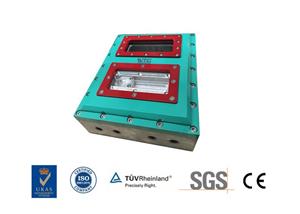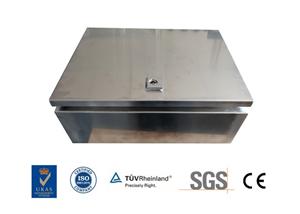Deformation heat treatment process
Deformation heat treatment is also called "thermomechanical processing". In the mechanical manufacturing process, the effective combination of pressure processing (rolling, forging, rolling) and heat treatment processes can simultaneously play the dual role of transformation strengthening and heat treatment strengthening, and obtain comprehensive mechanical properties that cannot be achieved by a single strengthening method. . This composite strengthening process is called deformation heat treatment.
In addition to obtaining excellent mechanical properties, the deformation heat treatment can also eliminate the reheating of the heat treatment, thereby saving a lot of energy, heating equipment and workshop area, and reducing heat treatment defects such as oxidative decarburization and distortion of the material. Therefore, the deformation heat treatment process has both excellent strengthening effects and huge economic benefits
(1) Quench after boring cutter forging
The boring cutter used for boring machine is 4mm in diameter, 6mm in diameter and 40mm in total length. It is quenched immediately after forging and tempered in time. As a result, the cutting life is increased by more than 30% compared with conventional processing.
(2) Hardening after turning
Self-use M2 steel turning tools, oil quenching immediately after forging, tempering at 550℃, service life is more than double that of commercial turning tools. With 9341 steel 12-square turning tool, it is oil-cooled after forging freely, and the service life is relatively high.
(3) Forging hot quenching of hammer head of pulverizer
65Mn steel 355mm×98mm×33mm pulverizer hammer head forging residual heat quenching: initial forging temperature 1050℃, final forging temperature 840~860℃, staying in the air for 2~3s after final forging, quenching into flowing tap water, 180~ Tempering at 200℃, the inner hardness of the surface layer of 10mm can reach 50~55HRC, and the service life is increased by more than 50% compared with the conventional heat treatment.
(4) Hot forging of socket wrench
Using 40Cr steel socket wrench and forging hot quenching instead of original salt bath quenching is not only energy saving and environmental protection, but also high quality.
(5) Chisel forging hot quenching
The 55MnSi steel chisel is forged on a 2500N air hammer and a special die. The high-temperature deformation temperature is 920 ~ 950 ℃, the deformation variable is about 75%, the final forging temperature is about 900 ℃, within 30s after deformation (depending on the surface color of the workpiece) ) Rapid water quenching and oil cooling, tempering at 220~270℃. After the deformation heat treatment, the chisel has high hardness and good toughness, and the service life is greatly improved.
(6) Forging heat quenching of thread ring gauge
Forging a 230mm×120m CrMn steel blank with a mass of about 40kg into 90mm×90mm×600mm square strips, and then cutting according to the ring gauge size. Heat the billet to 1050~1150℃, properly keep it in the high-temperature deformation zone for rapid upsetting, its deformation is 35%~40%, the final forging temperature is 920~900℃, immediately put into 40~70℃ oil cooling, at The oil is cooled in 40 to 60s, and the oil is cooled in air at about 100°C, and then tempered in time. The surface hardness of the ring gauge is ≥62HRC.
(7) 45 steel sprocket forging heat quenching
The initial forging temperature is 1070~1150℃, the final forging temperature is 850℃, the deformation is 35%-75%, the tempering temperature is 200~350℃, compared with the salt bath fire box furnace, the strength is increased by about 30%, and the wear resistance Sexuality increased by 26% to 30%.
(8) GCr15 steel bearing forging heat quenching
The deformation temperature is 930~970℃, the deformation quantity is 30%, oil cooling, 150~180℃ tempering. Compared with conventional heat treatment, the strength is increased by nearly 20%, and the contact fatigue life is increased by 23%.
(9) 40Cr steel diesel engine connecting rod forging hot quenching
First forging at 1150~1180℃, forging of tire membrane, deformation time 13~17s, deformation amount about 40%, followed by trimming on 2150N crank press, straightening immediately after quenching (workpiece temperature at this time is 900~950℃) And finally tempered at 650℃.
(10) 45Mn2 steel ball forging hot pre-cooling quenching
Use 45Mn2 steel ball with a diameter of 70~100mm, the initial forging temperature is about 1200℃, the final forging temperature is controlled at 1000~1050℃, select different pre-cooling time according to the steel ball specifications, then water quench, 150~180℃ tempered steel ball The surface hardness is ≥57HRC, and the depth of the hardened layer ≥50HRC is all >20mm, which meets the requirements for the use of large-size steel balls.
(11) 65 Mn steel ploughshare roller forging residual heat quenching
1100 ~ 1200 ℃ medium frequency induction heating, from the beginning of the roll forging deformation to about 20s before quenching, the deformation of different parts of the ploughshare is 56% to 83%, and the quenching heat density after deformation is in CaCl 2 aqueous solution of 1.30 to 1.35g/cm 3 After quenching, it is tempered at 460~480 ℃×3h, hardness 40~45HRC.
(12) Hot forging of automobile steering knuckle
40Cr steel automobile steering knuckle with a diameter of 60mm is heated at 1150~1200℃ and then forged. The final forging temperature is 900~850℃. The use of forging waste heat quenching not only saves energy and reduces costs, but also significantly improves the organizational structure and material strength, especially the impact toughness.
(13) Hot tempering of Cr12MoV steel precision plastic hot stamping die forging
The external dimensions of the mold are 70mm×20mm×10mm, and 20 small holes with diameters of 1.5mm, 2.5mm, and 3mm are distributed on the 20mm width plane. The tolerance of the hole pitch after heat treatment is ±0.006mm, and the flatness is less than 0.01mm. 56~60HRC.
Due to the severe segregation of eutectic carbides in Cr12MoV steel, it is broken to a certain extent after rolling and rolling, but it is still distributed in a strip shape along the rolling direction, and the core is in the shape of a net, block and pile, which becomes the stress concentration and The source of cracks leads to anisotropy of the material, and also increases the distortion of heat treatment. The forging heat deformation is used to solve the above problems. The specific process is as follows: initial forging temperature 1050~1160℃, final forging 850~950℃, while hot oil is cooled, 780℃×3h×2 tempers. Final heat treatment process: 600℃+850℃ two preheating, 1100~1160℃ salt bath heating, 800℃, 450℃ twice classification, 280℃ isothermal quenching, 490~500℃×2h×2 tempering.
The metallographic structure after the final heat treatment: martensite + lower bainite + dispersed carbide powder + a small amount of residual austenite. Its volume specific volume is close to that of forged and tempered sorbite, and it achieves slight deformation. After heat treatment, it does not need to be straightened. The distortion all meets the technical requirements, the hardness is 58-60HRC, and the pass rate is 99.99%. The mold heat-treated according to the above process has high heat resistance, hot hardness and wear resistance, and has a long service life.
(14) Forging and hardening of hardware tools
Wrenches, screwdrivers, pliers, scissors and other hand tools in hardware tools are the earliest forging waste heat quenching. This may be the earliest deformation heat treatment prototype. Place the parts of the tool to be quenched in a coke oven to heat it. Forging, some fires are needed to reach the set size. After the last fire is forged, do not air-cool. Choose the appropriate coolant according to the material, and then place it on the side of the furnace for tempering or use its own residual heat for tempering. Tempering stove.
(15) Forging and quenching of woodworking tools
After free forging, planers, axes and chisels in woodworking tools are generally quenched with waste heat, saving electricity and time, and high production efficiency.
(16) Forging waste heat quenching of agricultural machinery
Now in some market towns in the countryside, you can still see agricultural machinery that is heated by a coke oven and quenched with forging waste heat. It has sickles, shovels, shovels, rake targets, hammers for crushers, etc., and kitchen spoons, spatulas, kitchen knives, etc.




